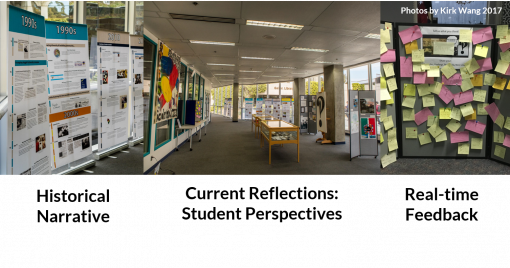A “living archive” (Rhodes, 2014) is a collection of materials presented in a way that allows for the expression, exhibition, documentation and preservation of a sentiment or movement in a particular community. It consists of three parts:

- Historical Narrative: a timeline of historical artifacts and accounts documenting the progression of a movement,
- Current Reflections: creative works by current members of a community that offer an expression of community sentiments and experiences at that time,
- Real-time Feedback: feedback about the exhibit or movement as a whole, whereby preserving in-the-moment responses allows reflections of the past to converge with vital expressions of current sentiment.
This format, influenced by The New School’s Occupy Wall Street living archive, allows for the inclusion of past and historical narratives beside present sentiment in the form of creative expression, and in-the-moment feedback and commentary. This is a way to bridge formats where all is collected and presented together to holistically share a particular narrative.
Reference:
Rhodes, T. (2014). A living, breathing revolution: How libraries can use ‘living archives’ to support, engage, and document social movements. IFLA Journal, 40, 5-11.